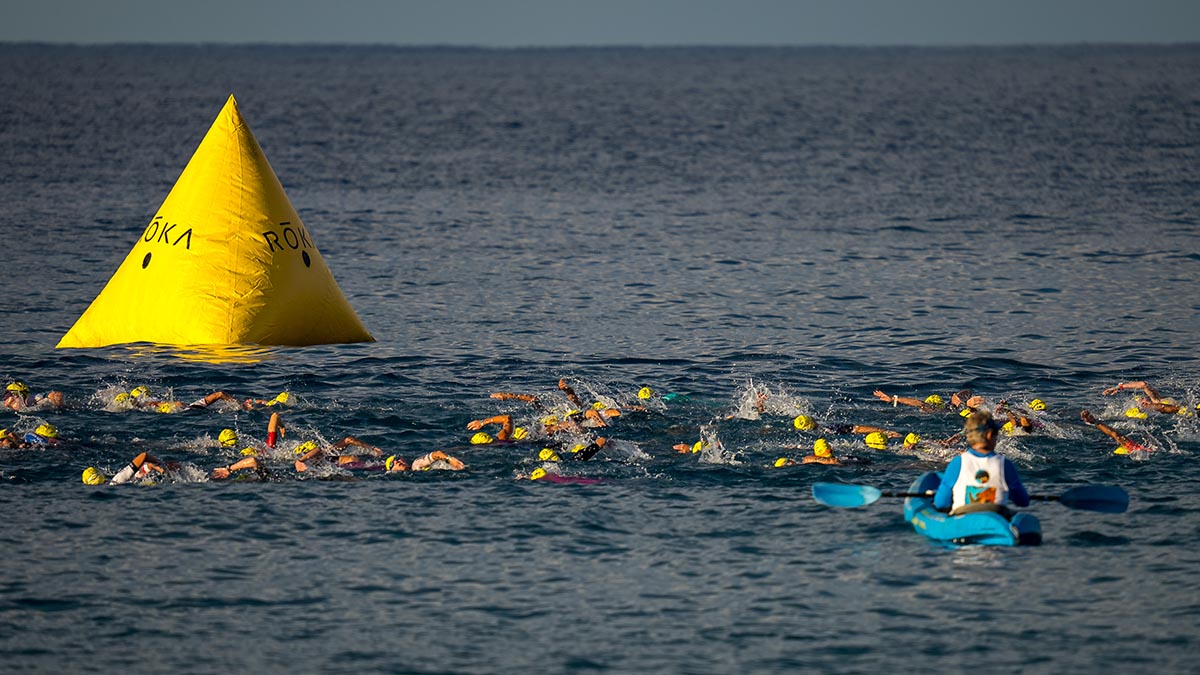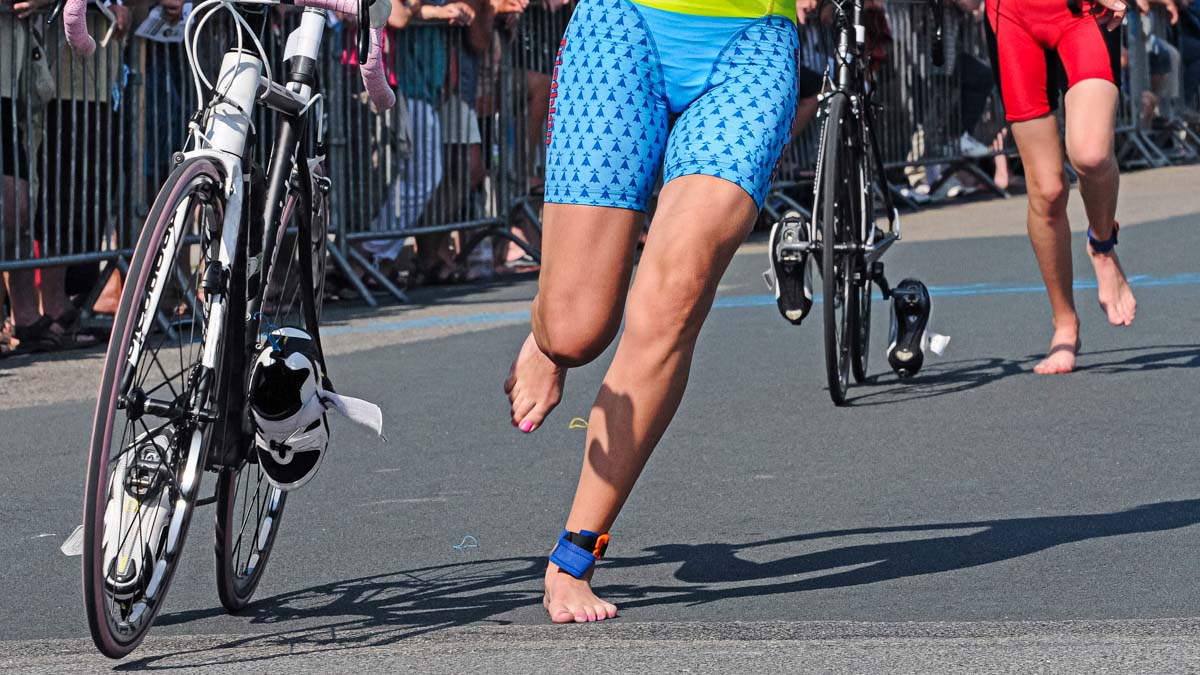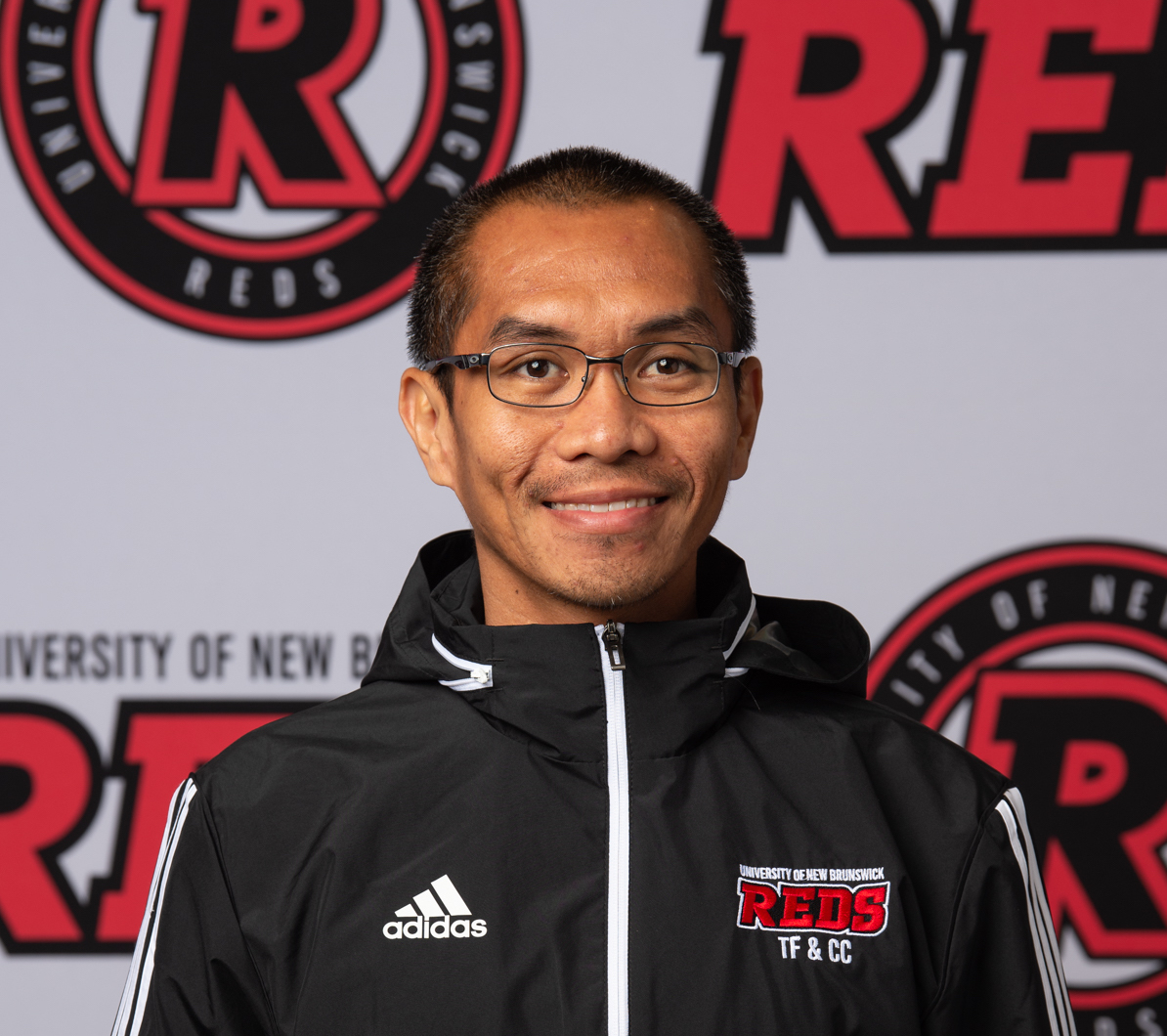As a coach, you know that triathletes face a perpetual time crunch.
As they juggle three sports, try to stay married, perform at work, and make it to their child’s soccer game, life can get overwhelming. Triathletes are often high-achieving individuals who do not like to compromise performance, so sacrificing one of these areas is not an option either.
This stubborn mentality often results in a lack of balance. However, by encouraging them to harness principles of efficiency, it is possible to streamline triathlon training in such a manner that allows them to approach their genetic performance potential while still nurturing other life responsibilities.
The following are six principles that, if executed deliberately, will allow your athletes to maximize performance gains in fewer hours. Take these bits of advice to your athletes the next time they run into time-related issues.
1. Emphasize frequency and consistency over occasional big days
Seize the short windows of time in your schedule and stop turning your nose up at workouts that last less than an hour. Short workouts foster consistency, are beneficial and can be added to a busy schedule.
Remember, your fitness is not a bank account that increases in direct proportion to the number of hours of training you deposit into it. Your body won’t necessarily reward you twice as much for a 60-minute versus 30-minute run. It will, however, reward you for running consistently over weeks, months, and years.
If you are on a business trip and have a 45-minute window of time at the hotel before meeting clients for dinner, do not lie around watching TV. Instead, take advantage of the downtime and squeeze in a short workout. All things being equal, every shorter session may not be worth the same as longer sessions, but they are still effective at igniting the cellular signaling that boosts fitness, are easy to recover from, and are easily scheduled.
Too many busy athletes end up trying to cram in a sizeable chunk of their training, with much of the volume concentrated during the weekends in long sessions. Although occasional big days are important (especially for long-course racing), they should be the cherry on top of a sundae of shorter, consistent workouts. It is over the long term, through frequent stimulus, that your body makes the adaptations that boost fitness. Instead of searching for multiple two-hour time windows each week, strive for frequency across disciplines.
2. Stop obsessing over training volume — work on executing a balanced plan
Many triathletes train with the singular focus of maximizing the total number of hours each week. The result is often a haphazard training cycle with little deliberate focus on executing a balanced mix of high-benefit workouts that have specific purposes. They should include integrating a mix of VO2, threshold, sweet spot, technique, and recovery sessions into the plan. It is what you do that counts, not how long you do it.
To ensure your plan is balanced and effective, identify the key sessions that are not negotiable. These are higher intensity and key endurance sessions that, compared to the other workouts, are most beneficial for advancing your fitness. Schedule these workouts for times that will not be threatened by other responsibilities, and strive to go into these priority workouts focused and fresh by emphasizing good sleep and nutrition beforehand.
Executing key sessions well will boost essential fitness metrics, such as threshold and aerobic capacity, most efficiently. These workouts also forge the mental toughness to persevere during racing.
3. Allocate intensity relative to triathlon goals
If you are truly looking to maximize your performance in fewer hours, a large proportion of your training will need to be in upper-intensity zones (above Zone 2). This is not to say that the majority of your training will be at higher intensities; however, compared to individuals who have the luxury of training 15 to 20 hours per week, a greater percentage of the time you spend training will be.
For most triathletes, most intensity should be allocated to the bike. Cycling is less traumatic on the tendons and joints than running and offers lower recovery costs, so working harder in the saddle is more feasible and carries a lower likelihood of injury. Cycling also relies more on muscular power than running, which is influenced by tendon elasticity and economy. In many instances, muscular strength and power (not cardiorespiratory fitness) hold triathletes back on the bike.
A steady diet of sweet spot work (upper Zone 3 just below threshold), and VO2 intervals (short intervals of 30 seconds to five minutes in Zone 5 or 110 to 120 percent of your FTP) should be the cornerstones of your cycling program. For efficiency, cycling on an indoor trainer is productive as it allows you to execute workouts at precise intensities without dealing with outdoor obstacles such as traffic, stop lights, or weather. If you are serious about getting faster in fewer hours, riding indoors and riding hard is essential.
In contrast to cycling fitness, your run fitness benefits most from volume and frequency rather than intensity. Most triathletes would be best served to strive to increase their volume to more than 25 miles a week before integrating hard intervals and tempo runs that many consider when they think of run training. Before you can do these workouts, you need to develop the durability to withstand the trauma they place on your body. This is accomplished by intelligently increasing volume to a reasonable level rather than increasing both volume and intensity at the same time. The truth is that you can run quite close to your potential with a steady diet of Zone 2 work and strides. Because of this, it is usually more productive for triathletes to embrace easy and frequent running rather than focusing on high-load run sessions, which too often lead to injury and inhibit the ability to execute key workouts within the other disciplines.
4. Allocate time relative to your goals — especially for the swim
If your goal is to race as fast as possible, it is not wise to distribute equal time to each discipline. Time investment should be strategic and relate to the upside of each discipline. For example, in long-course racing, the swim is a relatively small component of your day, likely around ten percent of total race time. This contrasts sharply with the bike, which will be closer to 40 to 50% of the total race time. Clearly, bike strength trumps swim strength in long-course racing, and your training should reflect this. However, if your target race is a draft-legal triathlon where the swim composes a greater portion of the race and you are a weak swimmer, the equation changes and you need to emphasize swim fitness.
For most time-strapped triathletes, just striving for proficiency in the water should be the priority. Many athletes hit a plateau in swim training, at which point taking off substantial chunks of time becomes exponentially more difficult. Fortunately, it does not take much swimming to maintain a level of fitness, after which point the return on investment in training time becomes marginal. Once you achieve proficiency, you can perform quite well on two to three targeted swim sessions each week. If you make your sessions count, such as by swimming with a masters group, you can swim quite well on two hours of swim training per week. You can also supplement or replace pool sessions by integrating additional tools into training, such as the Vasa swim trainer or ergometer, which can be a strategic replacement for more time-intensive trips to the pool.
5. Know the intensity zones and meticulously track fitness metrics
When you train efficiently, you need to perform your workouts at precise intensities. By spending time in certain intensity zones, your body adapts uniquely to that zone. For example, lung-busting Zone 5 intervals at 115 percent of your threshold power on the bike will boost your aerobic capacity more efficiently than Zone 3 intervals, and long runs performed in Zone 2 will lead to adaptations similar to long runs performed in Zone 3 with lower recovery costs.
However, to perform workouts with precision, you need to actually know your zones and have the ability to track your intensity in real-time. Track your fitness by performing consistent field tests to establish your unique training zones and harness the data that will allow you to measure your effort in real-time, whether through heart rate, pace or power.
When you are trying to wring every drop of potential from your training, it is important to be precise and make sure that each interval is on point and that your overall plan is progressing as it should. Every minute of training should have a purpose—know what it is and understand how it fits into each respective workout, microcycle, mesocycle and macrocycle.
6. Recover intelligently
One rarely considered facet of a low-volume approach to training is the increased importance of recovery. Because a greater percentage of workouts in an efficient training plan contain intensity, it becomes even more essential to unload the fatigue they generate. Your body gets stronger when you are resting, not when you are exercising.
Going hard every day is a recipe for disaster. If you attempted max efforts during every workout, your endocrine system would go awry, your mood would plummet, and your performance would decay. There is a fine line between top performance and burning out, so take recovery seriously. Make sure you prioritize sleep, eat well, and keep your easy days easy. Many athletes fall into the trap of going too hard during their recovery sessions. Have the courage to peel back the intensity when the plan calls for it. This will allow you to execute the challenging key sessions and progress.
Conclusion
It is no secret that triathlon is notoriously time-intensive. Although excelling at three disparate sports requires substantial sacrifice, if athletes approach triathlon training intelligently, it is possible to achieve remarkable gains without jeopardizing other areas of life. By assimilating these six principles into training, athletes will be able to maximize performance without spending all waking hours swimming, biking and running.









